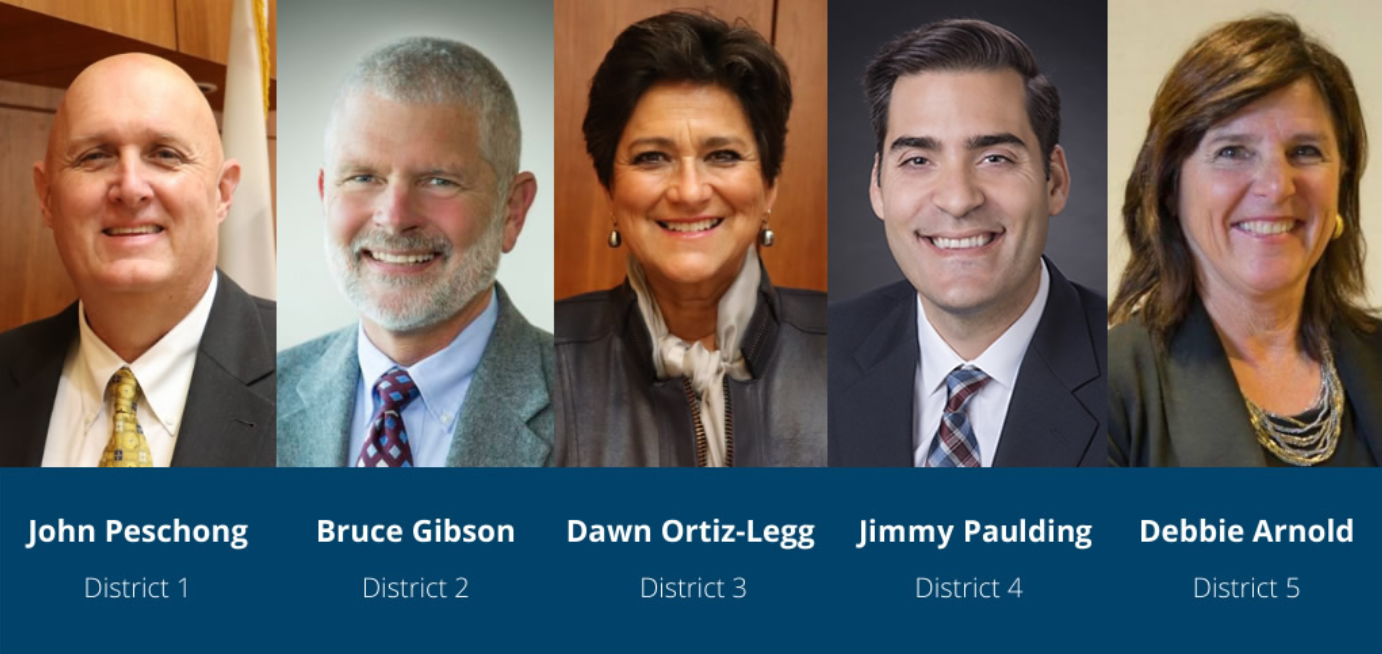Four arguments against SLO County’s redistricting plan
April 18, 2023

By KAREN VELIE
With San Luis Obispo County’s new board majority seeking a redo on redistricting, county officials green lit their plan to approve a new map during Tuesday’s meeting. The liberal board majority’s goal is to select one of three maps that closely align with the county’s 2011 map.
However, local election law attorneys Stewart Jenkins and Charles Bell assert that the board majority’s plan violates the 2019 Fair Maps Act, which was supposed to curtail partisan gerrymandering through public participation and requirements to keep communities intact. Jenkins is a Democrat and Bell is a Republican.
In two separate written comments to the board, Jenkins and Bell laid out a litany of reasons the county cannot “sanctify an unlawful map” through a lawsuit settlement. Here are the main takeaways from Jenkins’ and Bell’s assessments.
Settlement created a path for endless, politically oriented litigation
The litigants in the 2022 lawsuit alleged the “Patten Map” violated the federal Constitution by discriminating against Latino residents, that cities were not communities of interest and that the board had violated the Election Code by purposely favoring or discriminating against a political party. The judge then determined the Patten Map was legal, that it did not discriminate, and that cities are communities of interest.
The judge did, however, determine the board may have been “purposely favoring or discriminating against” a political party by failing to consider the proffered “partisanship data,” and the case moved on while county council appeared to allow the case to linger until a liberal majority was seated, according to Bell’s letter.
“The settlement of the redistricting litigation to allow the ‘do over’ in 2023, even if legal, creates a path to abuse and endless, politically oriented litigation whenever a board majority changes,” Bell says in his letter.
County council claimed no reportable action taken, but there was
On March 21, the Board of Supervisors met in closed session to discuss settling the redistricting lawsuit, after which County Council Rita Neal claimed there was no reportable action. The Brown Act requires county officials to publicly report on actions taken during closed session.
Three days after reporting no action was taken, on March 24, the county announced the board had voted to settle the redistricting lawsuit.
The board had agreed to toss the existing map, consider three maps supported by the petitioners and pay the petitioners $300,000 for legal costs, according to the settlement agreement. The county also agreed to resume and complete the redistricting process regarding selecting a new map no later than May 15.
The county did not release the names of the supervisors who had voted to settle, nor the vote count.
“The Brown Act requires that if actions are taken in closed session, the action be announced upon resuming public session and that the vote on the action be announced,” Jenkins said.
The county is skirting rules regarding mid-decade redistricting
While the Fair Maps Act permits a mid-decade “districting” or “redistricting” when the “board is settling a legal claim,” the county is still required to abide by the rules, both Jenkins and Bell noted in their letters.
Following a redistricting prompted by a settlement, the Board of Supervisors “is required to follow all of the mandated procedures and conditions set out in the full chapter from the beginning.” This includes four public hearings with one at night, one on a weekend, and two others offering the public full participation.
“Failure to follow the public process set forth in the Fair Maps Act now will result in a violation of the Act, making whatever map the board now may adopt unlawful,” Jenkins wrote in his letter.
None of the board majority’s three favored maps comply with the Fair Maps Act
In 2019, The Fair Maps Act changed the rules for redistricting with a focus on public participation, keeping communities and cities intact, and having as little population variances as possible.
The county’s 2011 map broke San Luis Obispo into three districts and Templeton into two while having an almost 10% population variance. The three maps the Board of Supervisors are supposed to select from are all versions of the 2011 map and do not abide by the Fair Maps Act, according to Jenkins and Bell.
All three preferred maps violate the “Fair Maps Act’s geographic contiguity, geographic integrity of communities of interest, cities and census designated places, and the geographic contiguity of districts criteria,” Bell wrote. “If the board fails to take into consideration these and other submissions by witness testimony or evidence, it would very likely be liable in litigation against one of these plans, if adopted.”






The comments below represent the opinion of the writer and do not represent the views or policies of CalCoastNews.com. Please address the Policies, events and arguments, not the person. Constructive debate is good; mockery, taunting, and name calling is not. Comment Guidelines